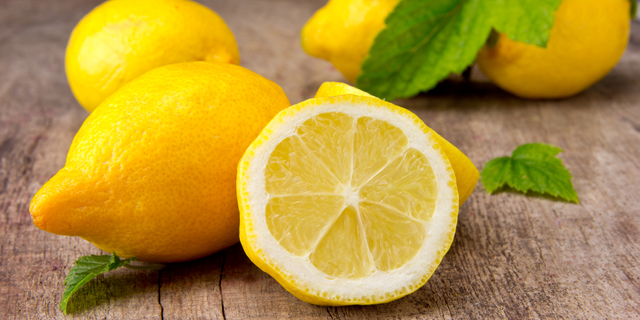Lemons are rich in Vitamin C, but did you know they are also loaded with fiber as well as citric acid, which aids in digestion? They are a great source of iron, potassium, and copper, though they are most prized for their antioxidant properties. No wonder we love lemons – they add a boost of flavor and nutrition to your kitchen!
How do I pick the best lemons?
Look for lemons with a bright yellow color that feel heavy for their size. Peels should look glossy and thin with a fine grained texture. Avoid any lemons that have green spots or a green tinge which indicates they are not fully ripened. On the other hand, avoid lemons that are wrinkled, have soft spots, or have a dull color since this indicates over ripeness.
What can I make with lemons?
Lemons are wonderful because they can be used in a variety of ways. Use the zest for spice blends, add to chicken breast for some zing before grilling, or use zest and juice to make cakes, cookies, sorbets, and gelato. Thin slice lemon and layer on fish before cooking, add to water for a refreshing lift or look back to your childhood summer days and make a pitcher of Limonada con Panela!
Wash lemons in warm water and dry right before use. If squeezing, roll room temperature lemons under palm of hand on a hard surface, then cut and squeeze to ensure the greatest amount of juice is extracted. Use a microplane or vegetable peeler for recipes that require zest, just make sure you don’t peel or zest into the pith, the white layer underneath the zest, which is very bitter.
Storage? Lemons can be stored at room temperature away from direct sunlight for up to one week. They will remain fresh in the crisper of the fridge for up to a month, though this is more for juicing than zesting. Fresh squeezed lemon juice can be stored in the freezer for up to 3 months, and dried zest will remain fresh in an airtight container for one month.
Recipes to try include: Chicharron de Pescado, Marinated Vegetable Pinchos, and Lemon Garbanzo Quinoa Salad.


![Making Mealtime Matter with La Familia: Easy Sofrito [Video]](https://thelatinkitchen.com/wp-content/uploads/2015/10/sofrito-shutterstock__0-500x383.jpg)
![Easy Latin Smoothies: Goji Berry Smoothie [Video]](https://thelatinkitchen.com/wp-content/uploads/2015/12/goji_berry-shutterstock_-500x383.jpg)
















![Fun and Fast Recipes: Fiesta Cabbage Salad [Video]](https://thelatinkitchen.com/wp-content/uploads/2015/11/fiesta_cabbage_slaw-shutterstock_-500x383.jpg)









